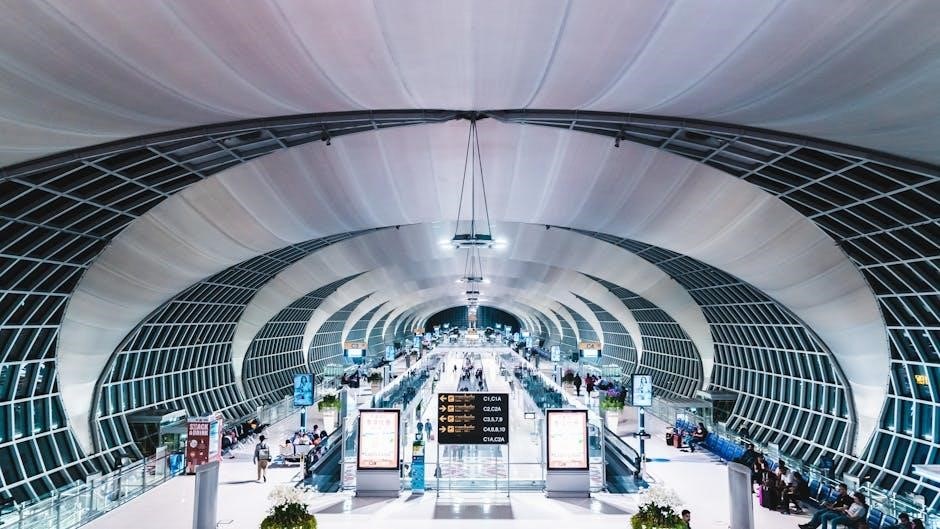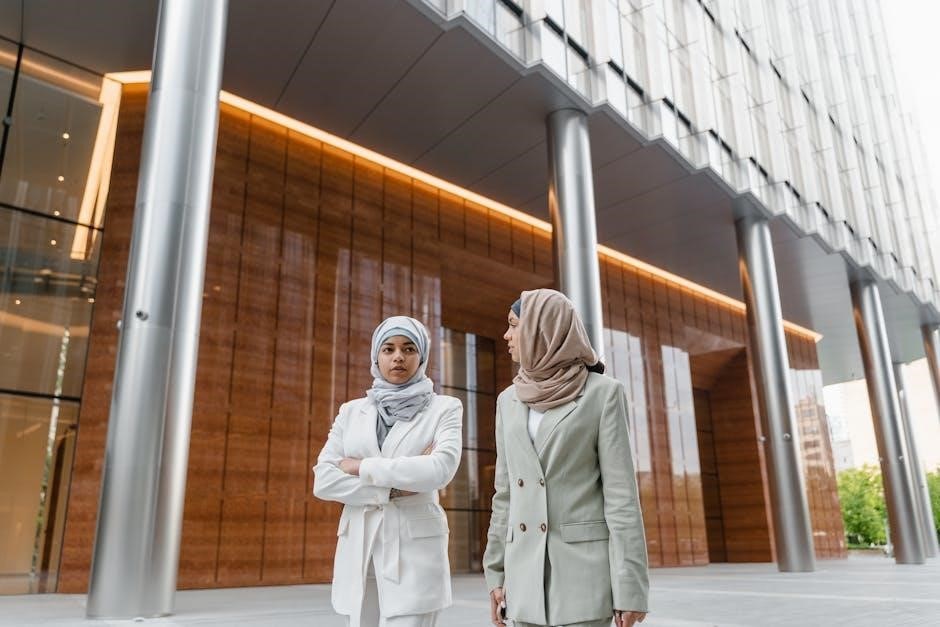The International Existing Building Code 2015 provides guidelines for existing buildings‚ available as a pdf file for download and reference purposes online easily.
Overview of the Code
The International Existing Building Code 2015 is a comprehensive document that provides guidelines for the repair‚ alteration‚ and change of occupancy of existing buildings. The code is designed to ensure that existing buildings are safe and meet the minimum requirements for building safety. The code is available as a pdf file for download and reference purposes online. It outlines the requirements for existing buildings‚ including those related to fire safety‚ accessibility‚ and energy efficiency. The code also provides guidance on how to bring existing buildings up to code‚ including requirements for retrofitting and renovation. Overall‚ the International Existing Building Code 2015 is an essential resource for building owners‚ architects‚ and contractors working with existing buildings. The code is widely adopted and enforced by jurisdictions across the country.
Scope and Application
International Existing Building Code 2015 applies to existing buildings and structures‚ including repairs and alterations‚ with specific requirements and guidelines online.
Purpose and Intent
The International Existing Building Code 2015 is intended to provide minimum requirements for the safety and protection of existing buildings and their occupants. The purpose of the code is to ensure that existing buildings are safe and habitable‚ while also promoting energy efficiency and accessibility. The code is designed to be flexible and adaptable to different types of buildings and occupancy uses. It provides a framework for building owners‚ architects‚ engineers‚ and contractors to follow when renovating or repairing existing buildings. The code also includes provisions for historic buildings and other special occupancy uses‚ and is available for download as a pdf file for easy reference and use online.

Code Provisions
International Existing Building Code 2015 provisions outline requirements for existing building repairs online easily and safely every day.
Retrofit Provisions
The International Existing Building Code 2015 includes retrofit provisions for existing buildings‚ which provide guidelines for modifications and upgrades to ensure safety and compliance. These provisions are outlined in the code and are available for download as a pdf file. The retrofit provisions cover various aspects‚ including structural‚ electrical‚ and plumbing systems. They also address accessibility and energy efficiency requirements. The code provides a framework for building owners and designers to follow when retrofitting existing buildings‚ ensuring that the work is done safely and in compliance with current standards. The retrofit provisions are an essential part of the International Existing Building Code 2015‚ and are used by building officials and designers to ensure that existing buildings are safe and functional.

Accessibility Requirements
International Existing Building Code 2015 ensures accessibility requirements are met for people with disabilities in existing buildings effectively always online.
Barrier-Free Accessibility
The International Existing Building Code 2015 provides guidelines for barrier-free accessibility in existing buildings‚ ensuring equal access for people with disabilities.
The code requires that existing buildings be modified to provide accessible routes‚ entrances‚ and facilities‚ including ramps‚ elevators‚ and accessible restrooms.
The code also requires that existing buildings be modified to provide accessible parking‚ signage‚ and communication systems.
Overall‚ the International Existing Building Code 2015 plays an important role in ensuring that existing buildings are accessible to people with disabilities‚ and its provisions are available online as a pdf file for reference purposes.
The code is an essential resource for building owners‚ architects‚ and contractors who need to ensure that their buildings are accessible and compliant with the code’s requirements.
Code Adoption and Enforcement
States and local jurisdictions adopt and enforce the code through legislation and regulations online easily always.
State and Local Adoption
The International Existing Building Code 2015 is adopted by states and local jurisdictions through a process of legislation and regulation.
This process involves the review and approval of the code by state and local authorities‚ and its adoption into law.
The code is then enforced by local building departments‚ which are responsible for ensuring compliance with its provisions.
The adoption and enforcement of the code can vary from state to state‚ and even from locality to locality‚ depending on the specific needs and requirements of each jurisdiction.
The code is available online as a pdf file for reference and download‚ making it easily accessible to building officials and designers.
This accessibility is important for ensuring that the code is widely adopted and enforced‚ and that its provisions are consistently applied.
The code’s adoption and enforcement are critical to its effectiveness in ensuring the safety and accessibility of existing buildings.

Relationship to Other Codes
International Existing Building Code relates to other codes and standards for building design and construction purposes online easily always.
International Building Code
The International Building Code is a model building code that provides guidelines for new construction‚ and it is often used in conjunction with the International Existing Building Code. The International Building Code sets minimum requirements for building design and construction‚ including structural‚ fire-resistance‚ and accessibility requirements. It is published by the International Code Council and is widely adopted by jurisdictions in the United States. The code is updated regularly to reflect changes in building technology and safety standards. The International Building Code is an important resource for architects‚ engineers‚ and builders‚ and it plays a critical role in ensuring public safety and reducing the risk of building failures. It is available online as a pdf file for easy reference.
Resources and References
Official websites and online platforms offer resources and references for the code in pdf format for easy access and download purposes always.
Code Commentary and Interpretations
The International Existing Building Code 2015 provides commentary and interpretations to clarify provisions and requirements.
These commentaries are available in pdf format and offer explanations for various sections of the code‚ including retrofit provisions and accessibility requirements.
Code officials and building designers can use these resources to ensure compliance with the code and to understand the intent behind specific provisions‚ ultimately leading to safer and more accessible buildings.
By referencing the commentary and interpretations‚ users can gain a deeper understanding of the code and make informed decisions about building design and construction‚ which is essential for ensuring public safety and accessibility.

Training and Education
Online courses and workshops provide training on the International Existing Building Code 2015 for architects and engineers easily available.
Code Application and Enforcement
The International Existing Building Code 2015 is applied and enforced by local jurisdictions‚ with training and education available for code officials.
The code provides guidelines for existing buildings‚ including retrofit provisions and accessibility requirements‚ to ensure public safety and welfare.
Code application and enforcement involve regular inspections and plan reviews to ensure compliance with the code‚ and penalties may be imposed for non-compliance.
The code is enforced by local building departments‚ and code officials must be trained and certified to apply and enforce the code correctly and consistently.
This ensures that the code is applied fairly and uniformly‚ and that public safety and welfare are protected.
Code application and enforcement are critical components of the code‚ and are essential for maintaining public trust and confidence in the built environment.

